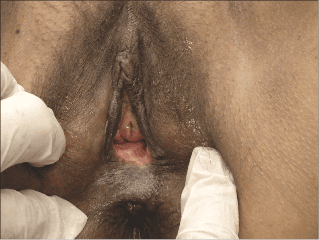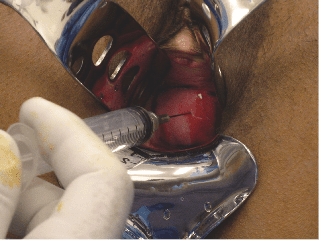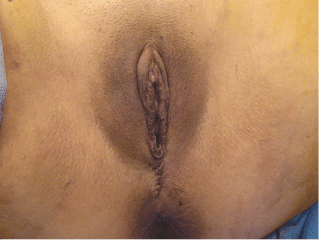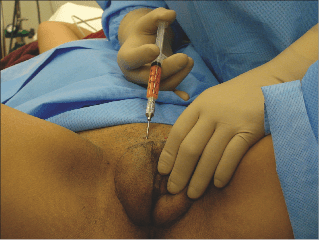By Denise Mann
|
Marco A. Pelosi II, MD |
Marco A. Pelosi II, MD, discusses the mainstreaming of cosmetic gynecology.
New research highlighting the dearth of accurate information on cosmetic gynecology procedures foundon the Web grabbed its fair share of headlines and re-sparked a debate about the safety and efficacy of these procedures.
The study, published in the Obstetrics & Gynecology edition BMJ Open, found that the quality of information on the Internet available for women opting for “designer vagina” procedures are poor, and, in some cases, inaccurate.
Specialists including Bayonne, NJ-based Marco A. Pelosi II, MD, and Marco A. Pelosi III, MD, the founders of the International Society of Cosmetogynecology, take issue with the way that cosmetic gynecology procedures—some of which they helped to pioneer—are being positioned on the Internet and by the media in general.
“There is no question that the quality and quantity of the clinical information regarding female and male genital cosmetic surgery of some cosmetic genital surgery Internet provider sites contain a lot of misinformation, fabricated definitions of cosmetic genital procedures, misquoting of scientific data, and offers of unrealistic cosmetic and sexual improvement,” Pelosi Sr tells PSP. “The dishonest use of non-standard terminology and misled technical descriptions of cosmetic vaginal surgery procedures and their indications is confusing to the medical community and women seeking these options.”
Inaccurate Information Abounds on the Web
In the new study, researchers from the University College Hospital in London Googled private providers who offered female genital cosmetic surgery and included the first five UK and US Web sites that came up on the search page. They assessed the content using 16 criteria, ranging from what, and how, procedures are carried out, to success rates and potential risks. The researchers also analyzed the language use, including terms such as “labial hypertrophy.”
Some 72 procedures were mentioned across all 10 sites, although the absence of standard terminology made it hard to decipher the exact number offered. Terms included “labioplasty,” “liposculpting,” “hoodectomy,” and “hymenoplasty.” Aesthetic concerns were mentioned on all the sites, including the visibility of vaginal labia through tight clothing and an awareness of larger-than-normal labia. Several sites recommended labial reduction to promote a “youthful vulval appearance.” One site explained this as, “A woman might have a facelift and look really young until she goes to bed and a partner can see the evidence of aging there.”
Surgery was often recommended to make the labia “sleeker” and “more appealing,” and although three sites did mention natural variation in the size and shape of labia, they still recommended surgery. All of the sites claimed that surgery would improve vulval appearance. Hymen repair was recommended by some sites as a way of improving “the woman’s hidden aesthetics” and to ensure that she would bleed on her wedding night and so be able to “keep [her] head high.”
Three Web sites explained that labial surgery would improve personal hygiene and curb the risk of infections, which the authors say may reinforce negative feelings toward the vagina, known as “pudendal disgust.” Half the Web sites mentioned that surgery would enhance sexual pleasure. Only two Web sites indicated success rates, all of which were 95% or 100%, but what constituted success was not defined. In addition, all sites mentioned unsubstantiated social and psychological benefits, including restored confidence and self-esteem.
But it isn’t just cosmetic gynecology procedures that get a bad rap on the Web and elsewhere, Pelosi says.
“This unfortunate type of dishonest, unethical, and misleading information regarding cosmetic genital surgery is not unique to this relatively new field, but is pervasive to a significant number of Internet provider sites offering other cosmetic procedures such as liposuction, facial cosmetic surgery, fat grafting procedures, treatment of cellulite, nonsurgical ‘face lift’ procedures, photo rejuvenation, mesotherapy, breast surgery, lifting procedures of face, breast, buttocks using suspension sutures, etc,” he says. “The same critical evaluation and analysis of the content of online advertisements regarding these cosmetic procedures will reach the same conclusions as the article.”
In this sense, cosmetic gynecology is just the new kid on the block, he adds.
“Cosmetic vaginal surgery and vaginal rejuvenation are the latest trend in cosmetic surgery and have created controversy, debate, and emotional responses in medical and non-medical circles,” Pelosi says. Confusion exists regarding what the term “vaginal rejuvenation” means, he says. “Many use the term incorrectly to include all aesthetic vaginal/vulvar procedures, including vaginal tightening surgery to enhance sexual performance, and others think that it is a single and unique ‘magical procedure’ designed to improve sexual function and the cosmetic appearance of the genitalia of the modern female.”
According to Pelosi, the term “vaginal rejuvenation” should be used to refer exclusively to procedures of the vaginal canal and vaginal opening that create adequate support of the pelvic floor, and repairs to tighten the vaginal canal and introitus designed to enhance or restore sexual function.
All the other procedures of the external genitalia designed to improve the aesthetics of the external vagina and vulvar structures such as labiaplasty, mons pubis liposculpturing and lifting, labia majora reduction, labia majora enhancement, etc, should be defined as cosmetic vaginal surgery and not as vaginal rejuvenation.
“Cosmetogynecology is the result of innovative gynecologists in private practice who took their expertise gleaned from years of restoring form and function damaged by childbirth, surgery, and disease to develop aesthetically focused options for the female genital area,” Pelosi says. “Unfortunately, the demand for these cosmetic vaginal procedures soon exceeded the supply of experts available to perform them.”
Female cosmetic surgery is among the latest and fastest-growing area of aesthetic surgery. “As a result, an increasing number of women are requesting aesthetic genital surgery, and gynecologists and cosmetic surgeons are motivated to incorporate such services into their practices,” he says.
Training programs in this new field emerged as well as the franchising of the cosmetic gynecology business—a common business model in all other areas of cosmetic surgery. “Soon, various criticisms of this novel field of gynecology appeared due in part to rogue practitioners indiscriminately and inappropriately applying their skills thinking these procedures were ‘easy’ and highly lucrative,” he says.
First, Do No Harm
A number of traditional gynecologic surgeons and some obstetrics and gynecology societies consider cosmetic vaginal surgery controversial. The most influential negative review on cosmetic vaginal surgery was published in 2007 as a Committee Opinion of the American College of Obstetricians and Gynecologists (ACOG). The report denounced deceptive and unethical practices related to some specific procedures—vaginal rejuvenation, designer vaginoplasty, revirgination, and G-spot amplification—and they frowned on the franchising of the cosmetic gynecology business.
“It is important to understand that a significant number of cosmetic vaginal surgery techniques are not new, but modifications of time-honored standard vaginal surgery of the external genitalia —such as ‘labiaplasty for medical indications’—which also have no documentation of safety and effectiveness,” Pelosi says. “What is new and has created some controversy is the performance of these procedures purely for cosmetic reasons, potential enhancement of sexual function, and improved self-esteem.”
Since 2007, an ever-increasing number of publications regarding cosmetic vaginal surgery have been published in peer-reviewed journals, indicating that the 2007 ACOG report requires revision.
According to Pelosi, the majority of cosmetic vaginal surgery critics are OB/GYNs in academic practice who have no previous experience in dealing with females requesting cosmetic surgery of different parts of the body. “They dismiss aesthetic vaginal surgery because they perform ‘medically indicated’ procedures and feel uncomfortable with the concept of operating on ‘normal women who want to alter the appearance of their genitalia for cosmetic reasons only,’ ” he says.
These women are not different from women with small breasts requesting breast implants. “If society accepts that any normal person has the right to change the cosmetic appearance of any part of the body, there is no logical reason to discriminate against cosmetic vaginal surgery only,” Pelosi says.
What a Girl Wants
And women do want these procedures for a multitude of reasons.
The current standards of external genitalia beauty is the result of more women undergoing full waxes of the external genitalia (also known as Brazilian bikini waxes), shaving, and use of depilatory creams that allows the full visualization and exposure of their external genitalia. “The easy access to magazines, erotic and pornographic videos, and the Internet exposing the genitalia of beautiful women has reinforced these new standards, many of which emphasize the prepuberty and teenager ‘look,’ ” Pelosi says.
 |
|
A 51-year-old woman requested vaginal tightening, G-spot augmentation, and labia majora volume enhancement. |
 |
|
Autologous fat injection for G-spot augmentation was performed. |
 |
| Vaginal tightening surgery was completed |
 |
| Autologous fat injection for volume enhancement of the labia majora was also performed. |
 |
| 11 months following surgery. |
In truth, a new industry of external genitalia skin care services and decorative services, including tattooing and bleaching, has also been sired. “Contemporary women are familiar and comfortable with aesthetic surgery, and therefore it is not surprising to observe the increasing number of them requesting elective procedures to alter or change the external genitalia and vagina for cosmetic reasons,” he says.
The list of procedures for cosmetic enhancement of the female genitalia include mons pubis liposculpturing and lifting, labia minora reduction, labia majora volume enhancement with autologous fat or fillers, labia majora reduction, labia majora midline convergence, removal of redundant prepuce, and clitoropexy.
Women seek these procedures for many reasons, including cosmetic improvement of self-perceived unappealing external genitalia anatomy, functional indications such us painful intercourse, discomfort with physical activities, protrusion of tissue from clothing, chaffing and hygiene cleaning issues, and to improve self-esteem. Other reasons may include enhancement of sexual satisfaction.
“Not infrequently, women will present with both a cosmetic request and a legitimate medical complaint. In such situations, both the cosmetic and the medically indicated surgeries can be performed at the same time,” he says.
The request for reconstruction of the hymen, known as “hymenoplasty/revirgination,” is a unique one. Women seeking this procedure have many reasons, most of them cultural. In some societies, the loss of virginity before marriage is a serious problem that may result in disgrace or even death.
An increasing number of women also complain of vaginal “looseness” or loss of their ability to experience vaginal orgasms after they have had vaginal deliveries, and request vaginal tightening to regain or enhance vaginal sexual gratification.
“These women usually present with patulous vaginas with various degrees of vaginal relaxation,” Pelosi says. “The procedures available to restore a firm introital tone and to reinforce the perineal body are called ‘vaginal rejuvenation.’ ” They include modifications of traditional gynecologic vaginal surgery procedures such as perineoplasty and vaginoplasty (anterior colporrhaphy, posterior colporrhaphy, excision of lateral redundant vaginal mucosa, and combinations).
Recently, noninvasive techniques are being evaluated to create tightening of the vagina using fractional CO2 and Er:YAG lasers on the vaginal mucosa, carboxitherapy, and injections of Platelet-Rich-Plasma in the vaginal mucosa.
These are highly specialized procedures that require a highly specialized skill set.
“Familiarity with the array of aesthetic options allows a well-trained gynecologist/cosmetic surgeon to make a realistic assessment of the ways in which the female patient’s concerns may be addressed,” he says.
Expectation Management
For example, when operating on patients requesting vaginal rejuvenation/tightening or G-spot augmentation to enhance vaginal sexual gratification, knowledge of sexual medicine is mandatory to avoid operating on females with sexual dysfunction, he says. “The cosmetic vaginal surgeon should be fully capable to correct his/her complications and to combine aesthetic vaginal surgery and the treatment of associated pelvic floor defects,” Pelosi tells PSP.
The consultation is especially important. Women should not be exploited, misled, or confused regarding what is a normal appearance of the genitalia. “The physician must clarify to the patient the variations of normal before she consents to aesthetic enhancement of her genitalia,” he says. “To take advantages of women’s insecurities regarding the appearance of their genitalia and imbuing them to conform to an imposed and artificial standard of beauty is unethical.”
Unrealistic expectations must also be addressed. “Patients should be told that the potential beneficial effects on sexual enhancement of vaginal-rejuvenation procedures and G-spot augmentation cannot be guaranteed, and that the available scientific data confirming their effectiveness and safety is still preliminary,” he says. “Likewise, the patient must understand that all other cosmetic vaginal procedures are purely aesthetic, and that no claims are made regarding outcome other than meeting the patient’s request for cosmetic enhancement.”
As demand for these cosmetic gynecology surgeries continues to rise, Pelosi says the collective focus must be on standardizing nomenclature, conducting evidence-based research, and appropriately training interested physicians. “These procedures are here to stay, and we must do our part to protect and inform patients.”
Denise Mann is the editor of Plastic Surgery Practice. She can be reached at [email protected].





